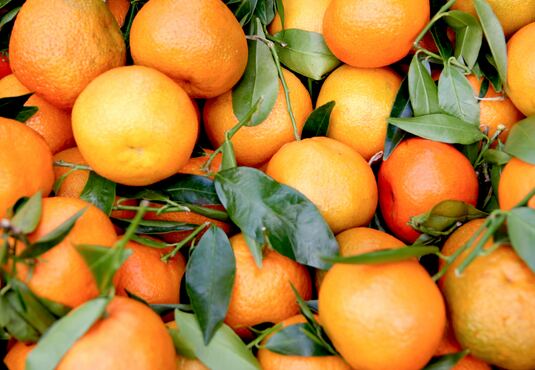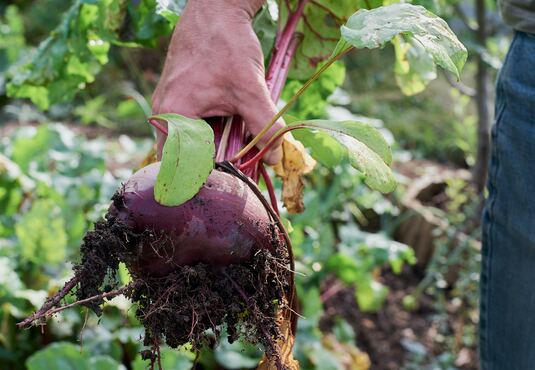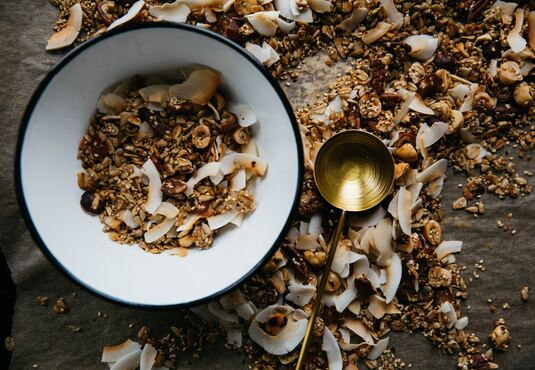
Vitamin D in the spotlight
Our spirit isn't the only thing to suffer during this period, our body does, too. We are generally less willing to exercise and spend less time out of doors. This has one particular effect above all others: our body's supply of vitamin D is compromised, which can also affect the risk of disease and death.
Vitamin D belongs to the group of fat-soluble vitamins and is very important for bone health into old age. It increases bone density and strengthens muscles. Conversely, a deficiency during childhood contributes to the development of rickets (bone deformities) and in adulthood to osteomalacia or osteoporosis (pathological bone deformation or decalcification). In the elderly, the risk of falls and fractures increases, as does the overall risk of death. Whether vitamin D also plays a preventative role with regard to cardiovascular diseases and certain cancers has been the subject of many scientific studies in recent years. Its possible influence on colds or respiratory diseases and susceptibility to covid-19 infection is also under discussion. It is relatively certain that serious vitamin D deficiency weakens the immune system.
Vitamin D has a special place among the vitamins, because it is not only absorbed through the diet, but is also formed by the body itself in the skin through exposure to sunlight (UVB). Each person's vitamin D production is significantly influenced by the time of day or season, the geographical latitude, the weather, the exposed skin area and also by the thickness and pigmentation of the skin. So in summer, 15 minutes of exposure to the sun is sufficient. By the way, don't avoid applying sunscreens, even if they somewhat reduce vitamin D synthesis. However, things look completely different here in the sun-poor winter months. In Austria and Germany, for about six months of the year the UV index is too low to ensure sufficient production by the body itself. Here, a Central European with mixed skin type would have to spend about two hours outdoors around noon - with hands, arms and face exposed to the sun. Fortunately, our body can also feed on what it has tanked up on in spring, summer and autumn. This is because vitamin D is stored in muscle and fat tissue for several months.“
Nevertheless, it is important - especially in the winter - to ensure a sufficient supply of vitamin D. Fatty fish in particular such as herring, salmon or mackerel are good sources, as are liver, eggs (i.e. egg yolk), some mushrooms, and avocados. However, we rarely achieve the intake of 20 µg/day (or 800 International Units) recommended by nutritional societies: children consume on average only about 1 to 2 µg and adolescents or adults about 2 to 4 µg per day through their diet. If the body's own vitamin synthesis is lacking or insufficient, the recommendation in our latitudes is to take a vitamin D supplement. This applies in particular to those aged 65 years and older, as in old age not only do we often move less and spend less time outdoors, but in general the capacity of the body to synthesise vitamin D also decreases significantly. For example, the body's own production is four times lower in a 70-year-old than in a 20-year-old. It may also be appropriate to administer vitamin D supplements to chronically ill people, especially those with certain intestinal diseases, and to people with dark skin. The diagnosis of a vitamin D deficiency or the actual necessity and prescription of the correct dosage is best discussed with your family doctor.“
We all need to take advantage of every opportunity to grab some winter sun. Even if there is no need to worry about an actual vitamin D deficiency – it is always worthwhile increasing our vitamin D intake, and especially now.“








